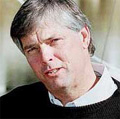
|
|
|
Scuttlebutt News: Gary Jobson’s America’s Cup Report from Valencia Among the leading authorities on the America's Cup, Gary Jobson is in Valencia, Spain providing his observations from the 32nd edition of the event. Race 7: Tuesday, July 3, 2007 Gary Jobson’s America’s Cup Report--Race Seven
There is no doubt that Alinghi won this contest fair and square. Every race was up for grabs, the boats were very even in speed, the breaks went both ways, and all seven races were a joy to watch. Alinghi just had a little extra of everything when it counted and that was the difference. It will be a long time before Emirates Team New Zealand recovers. But when Kiwis do regroup, watch out because they will be strong again. Every amateur and professional sailing tactician in the world will have an opinion on the incident approaching the second windward mark of Race 7. It is a shame that the cameras did not capture the action from directly overhead. That was the only view that would ever solve the big question of whether or not there was a foul. Of course, the only thing that counts is the ruling by the on-the-water umpires. Unlike all the other races, I was not present in Valencia so I was at the mercy of the replay camera and 3 D graphic rendering. Based on those views, I think New Zealand was very much at risk diving below Alinghi. If Alinghi held a steady course then there was a foul. It looked to me like Alinghi would have sailed right through New Zealand. Alinghi’s helmsman Ed Baird luffed hard at the appropriate moment to avoid a collision. I think the umpires made the correct call. You would think that was the end of the race, but then the capricious Valencia wind played a mean trick. It all looked routine on the final leg, except that the wind was dropping fast. Alinghi was slowing down. Suddenly NZ had a chance to pass Alinghi if the crew could make the penalty turn in time. Can you possibly imagine being on one of those boats, while trying to do your job and simultaneously not watching the other boat? For Alinghi, it would not have made that much of a difference because they still could have sailed two more races being up by a score of 4-2. But for NZ it was now or never. On the final lunge toward the line, Alinghi accelerated while NZ had trouble recovering from her penalty turn. I thought Barker should have headed higher to get moving before aiming a right angle for the finish. I bet the hearts of the race committee were pounding too. Everyone was engaged. And just like that… it was over. Whew! It would be hard to imagine a more dramatic ending. It might be 156 years before it happens again, but then again it might be just two or three years. back to top Race 6: Saturday, June 30, 2007 Race 7: Sunday, July 1, 2007 (postponed) Layday: Monday, July 2, 2007 Gary Jobson’s America’s Cup Report--Race Six
The score at that point was Alinghi 3 wins vs. NZ 2 wins in the best of 9 series. In the first five races NZ led in four of the races. The fifth was a heartbreaker. On leg 2 with a two-length lead, NZ's spinnaker blew apart, giving Alinghi an easy win. After the start of Race 6, NZ slowly worked ahead of Alinghi after a long starboard tack. The wind on the left side of the course was stronger and shifting in that direction. NZ benefited and led at the first mark by 2 lengths. Now comes the big decision. Which side of the course should NZ protect on Leg 3? Hutchinson called for the starboard gate (looking downwind), the boat rounded and headed off to the left side of the course. Less than 2 lengths behind, Alinghi's tactician had no choice but to head off in the opposite direction. NZ tacked to port to cover. So far so good. Soon Alinghi tacked on to starboard. Now NZ's lead was only 1/2 length. The left had worked well on Leg 1, but could the trend be changing? What did the weather forecaster suggest before the race - left or right? Now for the decision. Should NZ continue across Alinghi and take the right? If the wind was going right this was the moment to go for it. If the wind was going to be better toward the left, NZ would tack directly on Alinghi's wind and force them to the right. Butterworth was at Hutchinson's mercy. There was about 30 seconds for Hutchinson to make the call. It was silent on both boats. The tension built. Alinghi's helmsman, Ed Baird, bore off slightly to accelerate. His jib trimmer, Simon Daubney, eased the sail a click. You always want to be at top speed when boats engage in advance of a maneuver. Decisions are hard to make when you don't know the outcome. Hutchinson called for the tack. It was perfect. NZ protected the left, while Alinghi was forced to the right. But would the right trend that brought Alinghi closer continue? Two minutes later, the two boats tacked toward each other again. The spectators on an estimated 400 boats strained to get a clear view. The racing boats were close. Alinghi gained. The right was working. NZ could no longer cross. Everything was happening fast. The momentum shifted. Butterworth was in control. NZ scrambled to catch up, but the crucial victory that was needed to even the series was slipping away. Alinghi continued to gain on the right and won by a comfortable 28-second margin. Now NZ needs three victories in a row to turn the tide. After Race 7 was cancelled due to no wind on Sunday, and Monday being a scheduled lay day, NZ has time to regroup. Breaks happen in mysterious ways. Perhaps Hutchinson will have better luck in Race 7. back to top Race 5: Friday, June 29, 2007 Gary Jobson’s America’s Cup Report--Race Five
With the dreadful sight of a tear on the Kiwi’s spinnaker luff, the sail cloth looked too light to hold together. NZ knew they were in trouble, hence the need for sail change. But before they could prep for the change, the spinnaker blew out! To make it worse, the crew did a terrible job cleaning up the mess. It was an awful reminder of the equipment problems that plagued NZ in 2003. Alinghi’s tactician made a great call to sail away from NZ. Alinghi took the lead, easily won the race. and now lead the series 3-2 But New Zealand is very much alive in this regatta. Winning is a question of mental toughness. There is no doubt that the Kiwis have an uphill battle ahead. They must win 3 of the next 4 races against the well-prepared Alinghi. This is where leadership comes into play. Grant Dalton is the man in charge, and must get his sailors back on track. The first thing on his agenda is to let the foredeck gang discuss what went wrong. They might go sailing a little early before Race 6 to practice a couple of spinnaker changes to rebuild confidence. Once that task is put in the review mirror, NZ needs to focus on their strengths. And they have many. For the first time we witnessed races in the upper wind ranges, and guess what, the speeds of the two boats appear to be even. NZ helmsman, Dean Barker, gave Alinghi’s helmsman, Ed Baird, a real clinic during the start today. Once again, Alinghi entered the starting box late. Baird was on the run and was forced to use spectator boats as picks. Barker was in control and easily won the start. Alinghi would do well to abandon their passive, stay out of trouble strategy, and go at NZ with a vengeance. The pressure is on NZ tactician Terry Hutchinson. He must sail the races of this life. At 39, he has the ability, experience, and drive to get the job done. Hutchinson knows he can defeat Butterworth, 47, in smaller boats like Farr 40s and J/24s. Even though the stakes are higher now, it is still a sailboat race. Hutchinson should treat these like any other races. The heat is on Butterworth too. He has an owner who does not want to lose control of this event. After all, the America’s Cup is now the Billion Dollar Cup. In 1983, Australia II was down 1-3 to Liberty and came back to win three straight. At this point the greater pressure is on the defender. One good start, a clean race, and NZ can regain the momentum. For Alinghi, the same applies. Tomorrow is the crucial test. Wouldn’t you want to be on board one of these boats this weekend? Going into the final trials aboard Courageous 30 years ago, our skipper Ted Turner said the most inspiring words, “I am going to enjoy the final trials, win, lose, or draw because I think it will improve our chances of winning.” All these years later, Ted’s words remain good advice. back to top Layday: Thursday, June 28, 2007 Gary Jobson’s America’s Cup Report--All tied up at 2-2
Emotions are running high. After the fourth race, Emirates Team New Zealand protested Alinghi for improperly lowering their mainsail. It sounded like a stretch. The international jury gave the issue a five-hour hearing Thursday, and then dismissed the protest. My view is that it was the right call. In the July issue of Sailing World I wrote about protests by urging all sailors to stay out of the jury room. NZ should have waited for an issue that had more merit. Now the jury will look sideways at any future complaint. Out on the race course New Zealand has its work cut out. Alinghi is a faster boat, particularly when the breeze builds. So far NZ has been living large because the wind has averaged only 7-13mph, well below the usual 14-17mph winds here in Valencia. It makes me wonder if the wind gods are Kiwis? The strongest breeze appeared during the first race, where we saw Alinghi pointing closer to the wind. That night NZ took action. Under the rules you are allowed one major and one minor measurement configuration change over the course of the match. NZ changed their short bulb keel for a much longer one. The plan was to give their boat more stability. Wins in the next two races validated that decision. But NZ is out of major cards to play, while Alinghi has not made any measurement changes yet (a minor change would be something like changing wing angles). On the water there has been a good battle between helmsman, tacticians, and crews. Both teams have sailed extremely well. The toughest problem has been dealing with big, choppy waves. This has made it difficult to steer. Alinghi’s helmsman, Ed Baird, from the USA had big shoes to fill when he replaced three-time cup winner Russell Coutts. So far Baird has performed well. His biggest challenge is on the starting line. Dean Barker, New Zealand’s ace helmsman, will be looking to catch Baird off guard in the next set of races to draw a penalty. That is what you do if you lack speed. Tacticians Terry Hutchinson (NZ) and Brad Butterworth (SUI) have been at times brilliant and careless. Hutchinson will have to be especially clever to find a way to beat a master like Butterworth, who is riding on a faster boat. Around the waterfront in Valencia I see a lot more fans cheering for the underdog Kiwis. NZ needs all the help it can get. I bet New Zealanders back home will be up late at night to cheer their team on. back to top Race 4: Wednesday, June 27, 2007 Gary Jobson’s America’s Cup Report--Race Four
Alinghi drove NZ out to the lay line on leg one and rounded 20 seconds ahead at the first mark. On leg two NZ blew a jibe, and wrapped their spinnaker around the headstay. This kind of mistake is usually caused by the helmsman not turning in sync with the position of the sail. Error charged to Dean Barker. Alinghi stretched out to a 34 second advantage. On the 3rd leg NZ sailed to the left side of the course while Alinghi headed to the right. Every Swiss fan on our ship, Silver Whisper, was screaming for Alinghi to tack and cover. They were mindful of how Alinghi let NZ off the hook in Race 3 on the final leg by not covering, giving NZ the leverage needed to win a thriller on Tuesday. Would Alinghi’s tactician Brad Butterworth repeat the mistake? Finally, Alinghi tacked, but NZ still had the left side of the course to work with. The wind was forecasted to go right so NZ was on a wing and a prayer, however, half way to the windward mark Alinghi’s wind dropped and their boat slowed. NZ got the heading puff of wind they needed and were suddenly now even. Surely NZ would tack back to port toward Alinghi. This was the big moment… but NZ continued on. Now the Kiwis fans were urging their team to tack. I felt like I was at a Redskins vs. Cowboys football game where spectators scream for their team to cover an open downfield receiver. Alinghi’s owner, Ernesto Bertarelli, watched intensely from the leeward side of his boat. You could see by the expression on Bertarelli face that he was hoping NZ would not tack. After about a minute the wind returned and Alinghi started gaining. NZ had blown it. They had the opportunity to draw even, but had not taken it. Throughout the rest of the race NZ tried tacking duels and then jibing duels to pass. Alinghi matched every move, with Butterworth sailing right out of the textbook. In the end the margin was 30 seconds to Alinghi. The score now stands 2-2 in this best of nine series. Here is what we have learned to date: Alinghi has a slight edge upwind. Under 11 knots NZ is about the same speed. Both crews have made a few small, but costly, mistakes. The margin of error is tiny. For this reason there will be a lot more theatrics in the rest of this regatta. back to top Race 3: Tuesday, June 26, 2007 Gary Jobson’s America’s Cup Report--Race Three
Both teams were at times brilliant, and at other times sloppy. In the 6.5 to 9.2 knot wind range, there was little speed difference, upwind or downwind, between these boats. The waves out on the race course were huge, confused and nasty. It was a tough day for the helmsman. At one point on the first windward leg Alinghi’s helmsman Ed Baird looked over his shoulder at Emirates Team New Zealand surging into a big lead and uttered (expletive deleted) and thrust his head down. He looked mighty frustrated. Not a good thing so early in a race that promised a lot of wind changes. Alinghi’s superstar tactician, Brad Butterworth, calmed Baird down and the team went to work. At the first mark NZ was comfortably in the lead. Tactician Terry Hutchinson had the difficult problem of deciding when to cover and when to play the shifts. It was not an easy day to figure it out. Alinghi slowly chipped away at NZ’s lead. Baird regained his composure. In contrast, over on NZ two grinders were seen laughing. This is always a bad omen in any sport. Things happened when you get giddy with your good fortune. Approaching the leeward gate, the pole suddenly dropped and bowman Jero Lomas briefly fell into the water. Suddenly the Kiwi crew looked all out of sync. The rounding was wide, the spinnaker got stuck in the lead changer, several crew appeared out of position and Alinghi was coming on fast. Butterworth and company saw the mess and were ready to pounce. As luck would have it, the wind shifted to the left and just like that, Alinghi was back in the race. On board the Silversea Whisper, 350 guests were riveted by the action. America’s Cup Hall of Fame tactician Steve Van Dyke, author John Rousmaniere, and I watched in amazement. You could here a pin drop. But when one boat established a lead the partisan crowd would cheer (for the record, the Kiwis are louder on this boat than the Swiss). One mile from the windward mark, Alinghi (on port) started to dip NZ on (starboard). Hutchinson called for a tack to block Alinghi. But the tack was made too early. Baird on Alinghi came right back up on the wind. It was a reversal of the key moment we saw in race two. Butterworth wanted the left side of the course for the final mile and used stronger winds to round ahead by three lengths. Now there was only 3.3 miles to go. How could NZ possibly catch up? The giddy grinders no longer were smiling. At first NZ sailed low on port to try to get SUI to cover. But the Kiwis started losing and then jibed to starboard. Alinghi stretched and then threw in their covering jibe. Hutchinson called for another jibe and NZ crossed behind toward the lay line. Two miles to go and time was running out. Alinghi kept sailing straight, obviously comfortable with their 3-boat length lead. Steve Van Dyke, mentioned that it looked like a replay of the fateful Race 7 in 1983 when Dennis Conner aboard Liberty split with the Australia II. Everyone one on Silversea Whisper was leaning over the rail. Alinghi was sailing near our ship. I could hear several Swiss fans yelling “Cover!” But Butterworth sailed on. And then a miracle took place. The wind on the leeward side of the course filled in with more pressure. NZ started gaining. It was Butterworth’s turn to decide whether to cover or wait for a wind shift. He waited. The shift never arrived, NZ took the lead, and won by two boat lengths. Wow! Now what? Racing continues tomorrow. Alinghi has to win 4 of the next 6 races to retain the cup. This regatta is very much up for grabs. From the way I see it, the team that keeps its cool will prevail. Right now Ernesto Bertarelli has to be wonder if dropping Russell Coutts from Alinghi’s roster was a mistake. With two loses in a row, the powerful Alinghi looks like they are missing the tough experience NZ gained in the challenger trials. The series is now 2-1 in favor of NZ. Tomorrow will be the turning point. I am going to watch with great interest. back to top Race 2: Sunday, June 24, 2007 Gary Jobson’s America’s Cup Report--Race Two
ETNZ caught a favorable wind shift on the left side of the course during a tacking duel. ETNZ closed within one boat length after trailing by three lengths. Hutchinson called for his helmsman, Dean Barker, to sail low of course by about 7 degrees. But ETNZ did not ease the sails out. Butterworth on Alinghi called for helmsman, Ed Baird to tack right on the Kiwi’s wind. Fooled by NZ’s head fake, the call to tack was made too early. Instead of hurting NZ’s wind Alinghi allowed the Kiwis to have clear air in their sails. Barker brought his boat back up on the wind and now had the Swiss blocked. It was a rare mistake by Butterworth. And it was costly. NZ was able to hold Alinghi out to the layline before tacking. Alinghi trailed for the first time at a turning mark in this America’s Cup. The Kiwis stretched their lead and won by a comfortable four boat margin. Now what? Alinghi has a day off to think about their tactics. For Brad Butterworth it is the first time he has lost an individual race in the America’s Cup finals. Up until today he had a 16-0 record. Veterans, as good as Butterworth rarely make mistakes twice. ETNZ has it work cut out, if they hope to win four more races. Here’s why. If the wind is over 12mph Alinghi sails closer to the wind. The prevailing wind here in Valencia is expected to blow at least 14-17 on most days. Downwind, I think Alinghi has a slight edge in speed. And Alinghi maneuvers a little more efficiently. Alinghi is also playing in front of a home town audience. But New Zealand does have some arrows in its quiver. Dean Barker is better at starting than Ed Baird. The New Zealand crew is younger, which could make a difference in an extended series. There were about 300 spectator boats on the water today. This is about half the total of day one. On Tuesday, I expect even fewer boats to be out on the course churning up waves. This will help New Zealand that seems to favor smoother water. The boats are fairly close in speed. Certainly the most even I have witnessed in any America’s Cup that I have followed. The weather conditions might be the difference in this regatta. But right now we have 1-1 score and an important match is up for grabs. This cup is just warming up. back to top Race 1: Saturday, June 23, 2007 Gary Jobson’s America’s Cup Report--Race One
A 600 boat spectator fleet churned up the waves well before the late afternoon start. At one point the wind blew in at 19mph making the waves even steeper. This made reading the wind direction difficult for New Zealand’s tactician Terry Hutchinson and Alinghi’s tactician Brad Butterworth. On this day Butterworth made all the right calls. Hutchinson was in a catch up mode soon after the first wind shift on Leg 1. There simply were no passing lanes. The America’s Cup is set up as a best of nine series. New Zealand has to win 5 of the next 8 races to return the Cup to their home waters. If this race was a basketball game the Swiss won by 12 points. The question around the waterfront, is whether New Zealand has a chance to turn things around? The next race is scheduled for Sunday, June 24. The weather report calls for the wind to be 10 mph or less. That could be a help to the Kiwis. When the wind went light for brief periods they were able to close the gap to 1.5 lengths. But when the wind built, Alinghi stretched out. Alinghi’s helmsman, America Ed Baird looked calm throughout the race. To my eye New Zealand’s helmsman Dean Barker appeared to be over steering at times. Tomorrow, Barker will try for a better start, hope the wind is lighter, and the confused seas smaller. One race, does not make for a regatta, but a two to zero deficit would be a tough hole to didg out of for New Zealand. I am viewing the racing aboard the Silversea Whisper about one mile off the race course. Today I watched with winning America’s Cup tactician Steve Van Dyke (Intrepid 1970) and author John Rousmaniere. All three of us were impressed by Alinghi’s performance. It feels strange to us to be watching the America’s Cup in Europe, with Americans playing key roles on the race boats, but no American boat in the final. Perhaps that will happen next time around. For now we have a good contest to watch. If New Zealand can win race two it could be a great America’s Cup. A little better rebounding, and a couple of three pointers would do it for the underdog Kiwis. back to top |






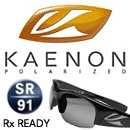


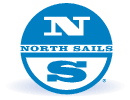

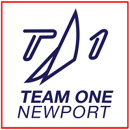


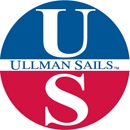


|

